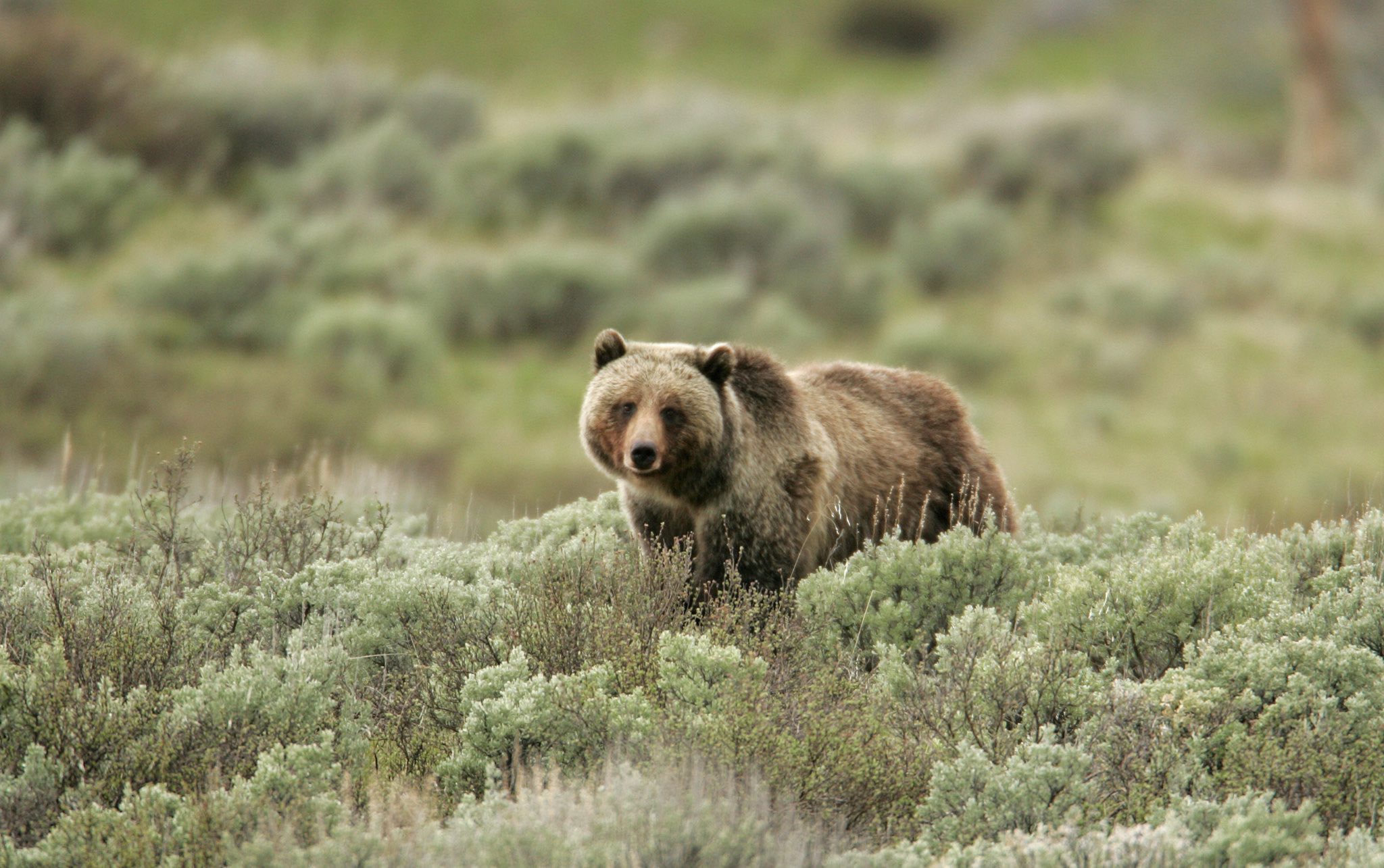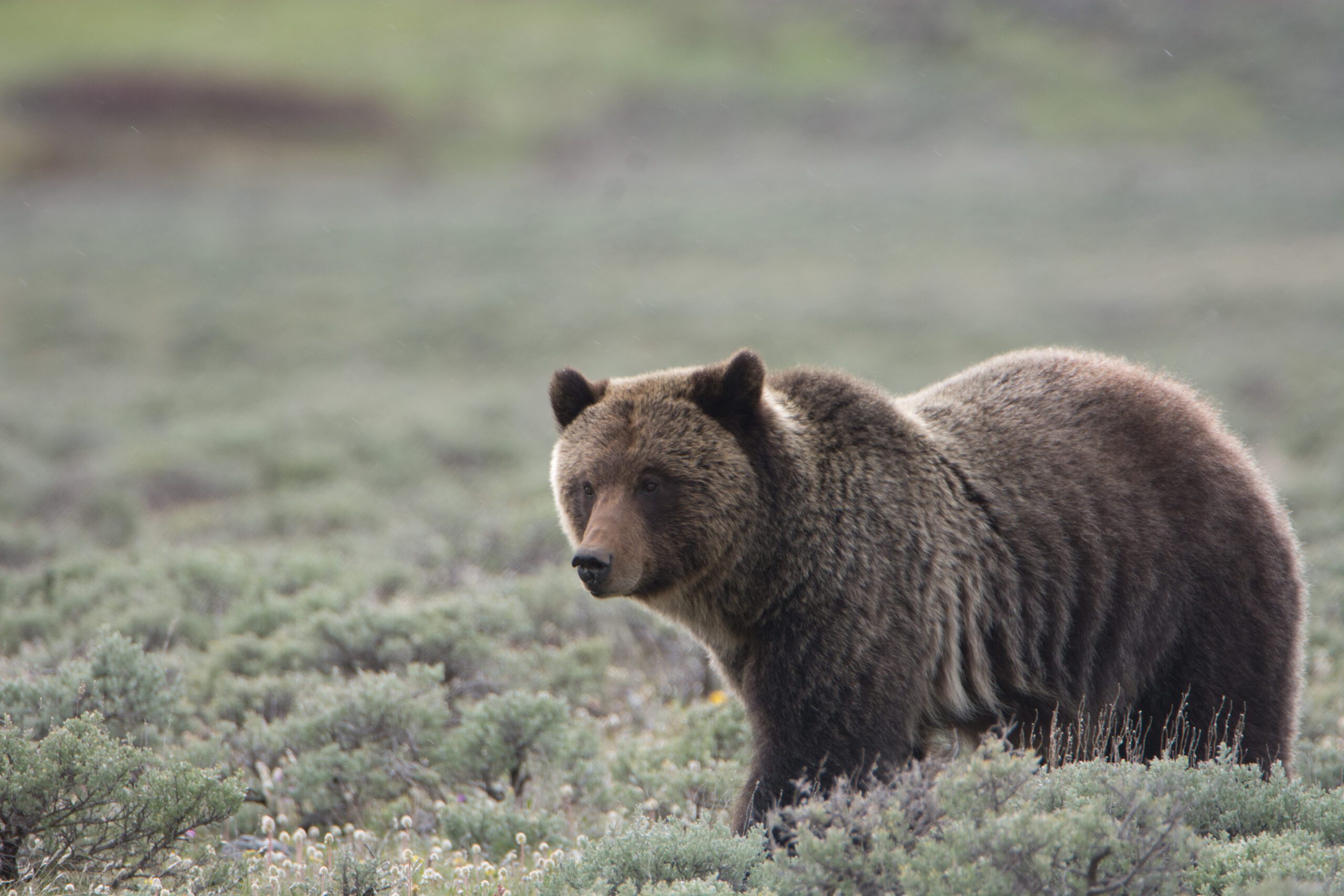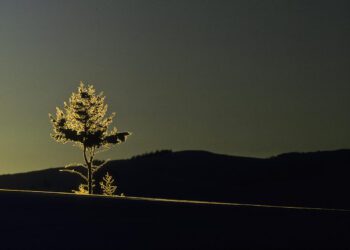Story by Emily Stifler | photo by Gregg Treinish
Cross Homestake Pass on I-90, or
hike into Beehive Basin north of
Big Sky, and you’ll see a predominance
of dead trees, their needles
a vivid coppery color. Mountain
pine beetles, the cause of much
of this mortality, are native to the
Rocky Mountains, and are part of
lodgepole pine forests’ natural life
cycle. Historically, the beetles have
also affected ponderosa, sugar, and
western white pines, and two 20th
century beetle epidemics killed
whitebark pines. All of these species
recovered.
Since 2000 however, scientists from
Colorado to British Columbia have
recorded a significant rise in beetlekilled
whitebark pine, in subalpine
ecosystems. While the percentage of
forest death varies between ranges, this
epidemic, combined with the invasive
white pine blister rust, has caused unprecedented
mortality.
“While, historically, climatic
conditions in high elevation
whitebark pine habitats
have prevented sustained
mountain pine beetle
outbreaks, today anthropogenic
global warming
appears to be allowing
outbreak populations to
expand into these previously
inhospitable areas,”
according to a 2001 paper on by
whitebark experts Jesse Logan and
James Powell.
In 2009, the Natural Resources Defense
Council and the U.S. Forest Service
coordinated an aerial survey of whitebark
pine mortality throughout the
20-million-acre Greater Yellowstone
Ecosystem. The study found 46 percent
of whitebark pine forests had high
mortality, and another 36 percent with
medium mortality.
The study stated, “This widespread
high-intensity mortality may
likely impact the ability of this species
to provide critical ecosystem services,
and may threaten the very future of this
ecosystem.”
Connie Millar, who has studied high elevation
pines for 25 years, says groundtruthing—
walking the land to learn
the extent and cause of mortality—tells
scientists if there are live trees remaining,
if young trees are regenerating and
whether there is blister rust.
“The combined effects [of beetles, rust
and drought] are causing more massive
mortalities,” Millar says. Whitebarks are
now a candidate species for the endangered
species list.
AN ECOSYSTEM
In the Greater Yellowstone Ecosystem,
whitebarks grow between 8,000-9,700
feet. There, they stabilize soil and shade
the spring snowpack, supplying rivers
with consistent runoff into summer.
Because they live in harsh climates with
poor soil, they grow slowly. The 2-3’
diameter trees on Lone Mountain in Big
Sky, for example, are several hundred
years old. Without the shade they provide,
a faster spring runoff would affect
farming and river ecosystem health.
Whitebark pines have symbiotic relationships
with Clark’s nutcrackers, red
squirrels and bears, and support many
other species of mammals and birds.
Because of this, they are considered a
keystone species – one that is critical to
the larger ecological community. In the fall, whitebark cones produce pine nuts, which are rich
in fat. Red squirrels hide the nuts in caches, and grizzlies
raid them. Clark’s nutcrackers, which co-evolved with
whitebarks, also cache the nuts in the ground: one bird
will have up to 10,000 caches, and the ones they forget
may germinate and become seedlings.
Tim Bennett, a bear biologist with Keystone Conservation
working with the community of Big Sky on bear
conflict issues, says whitebark pine nuts are an important
food source for bears, particularly pregnant sows, or those
with cubs. But whitebark cone crops have natural fluctuation
in productivity, Bennett says, and during years of
low cone production, bears descend to find other food,
and bear-human conflicts increase.
Alternative perspectives to the demise of whitebark
pine are rarely considered but should be by managers,
according to Matt Lavin, a botany professor at MSU.
“One such perspective is provided by anthropological
research, as summarized by Charles Mann in his
book 1491,” Lavin says. “High-density bison
populations could have been the result of
a release of hunting pressure after the
demise of the great American Indian
civilizations by small pox, influenza,
and other human diseases.”
Lavin makes an analogy: Likewise, the
many pine species in North America
that grow as near monocultures could
be a result of American Indians extensive
burning of pine forests. “After the Indians’
demise, colonizing pines took over and became
abundant during the 1900s, spurred by fire prevention
programs. Now, these dense pine stands
are fodder for blister rust and beetles.”
MOUNTAIN PINE BEETLES
During summer in Montana, adult beetles bore into a pine’s bark and lay eggs. As they burrow, they secrete a pheromone that attracts other beetles. The adults die in the fall, and the larvae hatch in spring, forming food channels that eventually girdle the tree by cutting off its nutrient and water flow.
The adult beetles emerge in mid-late July or early August. Historically beetles in the Greater Yellowstone had a two-year life cycle, Bennett says. “There is concern, and some evidence, that warmer, longer summers (climate change) will shorten their life cycle to one year.”
Beetles also carry blue stain fungi, which provides them with nutrients, but clogs a tree’s circulatory system. This causes the blue coloring in beetle-killed lumber.
“Beetles thrive during drought, [particularly] in stands that are tightly packed together and can’t get enough water,” says Millar, a Research Ecologist for the USDA Forest Service’s Pacific Southwest Research Station. She says beetles don’t kill 100 percent of the forests they attack. Once an epidemic is over, there are usually still live trees, which are often more resistant against future outbreaks.
BLISTER RUST
Blister rust is a fungal disease that came to America
on nursery stock of eastern white pine (a relative of
whitebark pine) in the early 20th century. Because
the rust doesn’t move tree-to-tree—it has to go
through a secondary host called Ribes (a currant or
gooseberry bush)—it is slower to spread. According
to Bennett, recent research documented blister rust
having many more secondary hosts (for example, Indian
paintbrush.) This is important, he says, because Ribes eradication campaigns have been unsuccessful.
Decades of research have been conducted on this pathogen, but its spread to higher elevation pines is new, and scientists don’t
entirely understand how and why it spreads. Although whitebark
is one of the more susceptible pine species, some appear to be
resistant to the disease.
DEFENSES
In the heart of winter, beetle larvae are
buried in the bark, protected. There,
they metabolize glycerol, which acts as
antifreeze. However, an early intense
cold snap, or one late in the spring, can
wipe them out, as will a couple weeks at
30 below, midwinter.
The 2009 aerial study found whitebark
pines were less affected by beetle
outbreaks in the core of the Wind
River Range and the Beartooth Plateau
– places not as affected by climate
change. There, dwarf whitebark pine
forests (called Krummholz) are resistant
to beetle attacks, but still susceptible to
white pine blister rust.
Humans have tried to control beetle
epidemics in several ways. Insecticides
are applied to individual trees or small
groups of trees to protect them from
being attacked by the beetles. The insecticide
must be sprayed from the bottom
to almost the top of the tree trunk, and
the most common are Sevin (carbaryl)
and Astro (permetherin). Sevin can
be purchased by a private landowner,
while Astro can only be purchased or
applied by commercial applicators. Both
are toxic to aquatic organisms, bees and
other beneficial insects.
Jim Cancroft, a Senior Forester
with Northwest Management, Inc.,
says a new insecticide Safari, that
only needs to be applied on the
lower five feet of a whitebark pine
has been tested in the Big Sky area
with promising results.
Research Ecologist Robert Keane
specializes in whitebark restoration
using sivilculture (forest thinning)
and prescribed burns, both of
which help forests stay healthy and
create habitat for Clark’s nutcrackers. Through his work at the Rocky
Mountain Research Station/Missoula
fire sciences lab, Keane has seen
these techniques be particularly effective
in conjunction with Verbenone,
a synthetic beetle pheromone
that works as an attractant.
Keane says beetles are now killing
whitebarks that survived decades
of blister rust infection, and fungicide
to fight the rust is costly
and ineffective. Some nurseries are
cultivating rust resistant whitebarks,
because “if we lose those
rust resistant trees to the beetles,
we may lose the whitebarks.”
IMPLICATIONS OF LARGE-SCALE WHITEBARK DEATH
Because whitebark pine nuts ripen as
bears are entering hyperphagia in the fall
(when they eat about 10,000 calories/
day prior to hibernating), they rely on the
fatty nuts. The Interagency Grizzly Bear
Committee predicts that in the absence of
whitebark pine nuts, bears will seek out
meat instead, but there is no prediction of
where they will obtain it.
According to Bennett, “Hunter kills and
garbage cans are the most likely sources.”
The bears in the Greater Yellowstone
are already “more reliant on meat than
bears in other areas because of low berry
production [here].”
Whitebarks also protect watersheds.
Most precipitation in the Northern Rockies
falls as snow, with the largest amounts
at high elevations. According to the Missoula-
based Whitebark Pine Ecosystem
Foundation, “The physical position of
trees on the landscape and the up-swept
branches of the crown provide shade to
delay snowmelt and to retain snowdrifts
until early to mid-summer.” Without that
retention, peak runoff will occur earlier
and summers will be drier, affecting river
ecosystem health and agriculture.
PART OF A LARGER BALANCE?
Is this massive mortality doom for any species? ”Dying trees, in and of itself, is not a problem if the regeneration isn’t wiped out,” says Millar. “This is what these species have been doing for over 100 million years.”
It’s the combination of beetles and blister rust that often eliminates the possibility for effective regeneration, she adds. Blister rust can kill saplings, and beetles attack trees larger than a foot in diameter.
“Between the two, if you don’t have young trees growing or adult trees reproducing, then you don’t have a species.”











